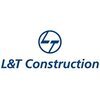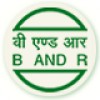Filter interviews by
Bridge & Roof Co Safety Officer Interview Questions, Process, and Tips for Freshers
Bridge & Roof Co Safety Officer Interview Experiences for Freshers
2 interviews found
I applied via Recruitment Consulltant and was interviewed in Jan 2022. There was 1 interview round.
(7 Questions)
- Q1. Tell me about yourself.
- Q2. What different between JSA and JHA
- Ans.
JSA and JHA are both safety procedures used in workplaces, but JHA is more comprehensive and includes hazard identification and risk assessment.
JSA stands for Job Safety Analysis and focuses on identifying potential hazards and developing controls to mitigate them for a specific job or task.
JHA stands for Job Hazard Analysis and is a more comprehensive process that includes hazard identification, risk assessment, and t...
- Q3. What is tool box talk
- Ans.
Tool box talk is a safety meeting held before starting a job to discuss potential hazards and safety measures.
Tool box talk is a short meeting held before starting a job
It is used to discuss potential hazards and safety measures
It is usually led by a supervisor or safety officer
Topics can include proper use of tools and equipment, emergency procedures, and personal protective equipment
Examples of tool box talk include ...
- Q4. What is MSDS and why they necessary
- Ans.
MSDS stands for Material Safety Data Sheet. They are necessary for providing information about hazardous chemicals.
MSDS provides information about the physical and chemical properties of a substance
It also includes information about potential health hazards and safety precautions
MSDS is required by law for all hazardous chemicals in the workplace
It helps workers and emergency responders to handle hazardous materials sa...
- Q5. What
- Q6. What is induction programme
- Ans.
An induction programme is a process of introducing new employees to the organization and their roles.
It is designed to familiarize new employees with the company culture, policies, and procedures.
It may include training on safety procedures, job-specific tasks, and company values.
It helps new employees feel welcome and comfortable in their new work environment.
It can also help reduce turnover rates and increase product...
- Q7. What is HIRA and why following
Interview Preparation Tips
I applied via Referral and was interviewed before Apr 2021. There were 3 interview rounds.

What is importance of Safety in industry ?.
(1 Question)
- Q1. What is Safety policy?.
- Ans.
Safety policy is a set of rules and guidelines that ensure the safety of employees and the workplace.
Safety policy outlines the responsibilities of employees and management in maintaining a safe work environment.
It includes procedures for identifying and reporting hazards, as well as measures for preventing accidents and injuries.
Safety policy also covers emergency response plans and training programs for employees.
Exa...
Interview Preparation Tips
- Factory Act
- Safety Officer Activities
Top trending discussions






Interview questions from similar companies

I applied via Company Website and was interviewed before Apr 2021. There were 7 interview rounds.
Accident, incident
Any hazardous
Any near miss
HIRA
Interview Preparation Tips
- Diploma Fire and Safety

(1 Question)
- Q1. Simple questions about construction safety

I applied via Approached by Company and was interviewed in Nov 2024. There were 2 interview rounds.
(3 Questions)
- Q1. What is safety and how does it relate to hazards?
- Ans.
Safety is the state of being free from harm or danger, while hazards are potential sources of harm or danger.
Safety refers to the measures taken to prevent accidents, injuries, or illnesses in the workplace or any environment.
Hazards are potential sources of harm or danger that can cause accidents, injuries, or illnesses.
Safety measures are implemented to identify, assess, and control hazards to minimize risks and ensu...
- Q2. What are the role and responsibilities of HSE officer
- Ans.
HSE officers are responsible for ensuring health, safety, and environmental regulations are followed in the workplace.
Developing and implementing health and safety policies
Conducting regular inspections and risk assessments
Training employees on safety procedures
Investigating accidents and incidents
Ensuring compliance with local, state, and federal regulations
- Q3. What do you mean by Hira
- Ans.
HIRA stands for Hazard Identification and Risk Assessment. It is a systematic process for identifying potential hazards and evaluating the associated risks.
HIRA involves identifying hazards in the workplace or environment.
It includes assessing the risks associated with each hazard.
The goal of HIRA is to implement control measures to mitigate or eliminate the identified risks.
Examples of hazards include chemical exposur
(1 Question)
- Q1. What is the definition of safety and how does it relate to hazards?
- Ans.
Safety is the state of being free from harm or danger, while hazards are potential sources of harm or danger.
Safety refers to the condition of being protected from harm or danger
Hazards are potential sources of harm or danger that can cause accidents or injuries
Safety measures are put in place to mitigate or eliminate hazards
Examples of hazards include slippery floors, exposed electrical wires, and toxic chemicals
Interview Preparation Tips

(3 Questions)
- Q1. Whats is a Safety policy
- Ans.
A safety policy outlines an organization's commitment to maintaining a safe work environment and preventing accidents.
Defines safety objectives and responsibilities for all employees.
Establishes procedures for reporting hazards and incidents.
Includes training requirements for staff on safety practices.
Outlines emergency response plans, such as evacuation procedures.
Regularly reviewed and updated to reflect changes in r
- Q2. What is a safety
- Ans.
Safety is the condition of being protected from harm or danger, ensuring well-being in various environments.
Safety involves identifying hazards and implementing measures to mitigate risks.
Examples include using personal protective equipment (PPE) in construction sites.
Safety protocols are essential in workplaces to prevent accidents and injuries.
Regular safety training helps employees understand and follow safety guide
- Q3. A safety policy is a set of rules and procedures that an organization has in place to protect people from harm

I applied via Job Fair and was interviewed in Jun 2024. There were 2 interview rounds.
(3 Questions)
- Q1. Work at height hazards?
- Ans.
Work at height hazards include falls, falling objects, unstable surfaces, and improper use of equipment.
Ensure proper training and use of fall protection equipment
Inspect equipment regularly for wear and tear
Secure tools and materials to prevent falling objects
Avoid working on unstable surfaces or in adverse weather conditions
- Q2. Why is work at height 1.8 meters?
- Ans.
Work at height of 1.8 meters is considered a significant risk level for falls in the workplace.
Work at height of 1.8 meters is a common threshold for implementing fall protection measures.
At this height, the risk of serious injury or fatality from a fall increases significantly.
Regulations and standards often specify 1.8 meters as the height at which fall protection is required.
Factors such as surface conditions, tasks...
- Q3. What Is Work At Height Hazards And Precautions?
- Ans.
Work at height hazards include falls, falling objects, unstable surfaces. Precautions include proper training, use of fall protection equipment, regular inspections.
Identify potential hazards before starting work at height
Ensure workers are properly trained on safe work practices
Use appropriate fall protection equipment such as harnesses, guardrails, and safety nets
Regularly inspect equipment and work areas for any def...
(2 Questions)
- Q1. What is the lifting hazard?
- Ans.
Lifting hazard refers to the risk of injury or strain when lifting heavy objects or lifting improperly.
Lifting heavy objects without proper technique can lead to back injuries
Repetitive lifting without breaks can cause muscle strain
Not using proper lifting equipment can increase the risk of accidents
Improperly lifting objects that are too heavy for one person to handle
- Q2. What is crane hazard?
- Ans.
Crane hazard refers to the potential dangers associated with the operation of cranes on a worksite.
Crane collapse due to overloading or improper setup
Striking nearby objects or workers
Electrocution from contact with power lines
Falling objects from the crane
Inadequate training or supervision of crane operators
Interview Preparation Tips
- 3.8 years

I applied via Recruitment Consulltant and was interviewed in Nov 2024. There were 4 interview rounds.
(2 Questions)
- Q1. Morning TBT safety inspection
- Ans.
Morning TBT conducted about daily basis at site Monthly inspection Full body harness Power tools Store inspection Fire extinguisher 🧯 RCCB inspection
- Q2. Height work safe and unsafe work
- Ans.
Safe height work involves proper training, equipment, and procedures to prevent falls and injuries.
Ensure workers are trained in proper safety procedures for working at heights
Use appropriate fall protection equipment such as harnesses, guardrails, and safety nets
Regularly inspect equipment for wear and tear to ensure it is in good working condition
Implement a buddy system or have a rescue plan in place in case of emer...
Group with work,paper work site visit etc.
(2 Questions)
- Q1. Height work training, safe work
- Ans.
Awrness to all works height work Safe work platform inspection with HSSE team and provide green tag
- Q2. General work training
(2 Questions)
- Q1. Height work permit general work permit.
- Q2. Excavation work permit, dshutring work permit.
Interview Preparation Tips
- Height work training
- General work training
- Work Permit
- PP,s
Thank you.

I appeared for an interview in Oct 2024, where I was asked the following questions.
- Q1. What is incident
- Q2. What is safety
- Q3. What is hazards

I applied via Job Portal
(2 Questions)
- Q1. How you are selected the parson for abroad,, because I am asking,, a lot of accident ,, but L& T was not take any action against, why because that parson of south chainal,, or relatives,
- Q2. Only you are selected, chainal, and relatives,, everywhere all of you following a lot of safety,, no body hearms, not injured, no fatality,,,but in india or abroad,, a lot of people was died in only L&T,
Interview Preparation Tips
Bridge & Roof Co Interview FAQs
Tell us how to improve this page.
Bridge & Roof Co Interviews By Designations
- Bridge & Roof Co Safety Officer Interview Questions
- Bridge & Roof Co Scaffolding Inspector Interview Questions
- Bridge & Roof Co Planning Engineer Interview Questions
- Bridge & Roof Co Electrical Engineer Interview Questions
- Bridge & Roof Co Diploma Electrical Engineer Interview Questions
- Bridge & Roof Co Assistant Construction Manager Interview Questions
- Bridge & Roof Co Safety Officer/Manager Interview Questions
- Bridge & Roof Co QA QC Engineer Interview Questions
- Show more
Interview Questions for Popular Designations
- Safety Supervisor Interview Questions
- Senior Safety Officer Interview Questions
- Fire & Safety Officer Interview Questions
- Safety Engineer Interview Questions
- Safety Manager Interview Questions
- Drug Safety Associate Interview Questions
- Safety Supervisor, Safety Officer Interview Questions
- Environment Health and Safety Officer Interview Questions
- Show more
Safety Officer Interview Questions from Similar Companies
Bridge & Roof Co Safety Officer Reviews and Ratings
based on 29 reviews
Rating in categories
|
Safety Officer
156
salaries
| ₹1.8 L/yr - ₹6.3 L/yr |
|
Civil Site Engineer
155
salaries
| ₹1.7 L/yr - ₹6 L/yr |
|
Site Engineer
144
salaries
| ₹1.8 L/yr - ₹6 L/yr |
|
Piping Engineer
89
salaries
| ₹1.8 L/yr - ₹8.4 L/yr |
|
Mechanical Engineer
74
salaries
| ₹1.9 L/yr - ₹7.5 L/yr |

L&T Construction

Simplex Infrastructures

AECOM

L&T Energy Hydrocarbon
- Home >
- Interviews >
- Bridge & Roof Co Interview Questions >
- Bridge & Roof Co Safety Officer Interview Questions for Fresher















